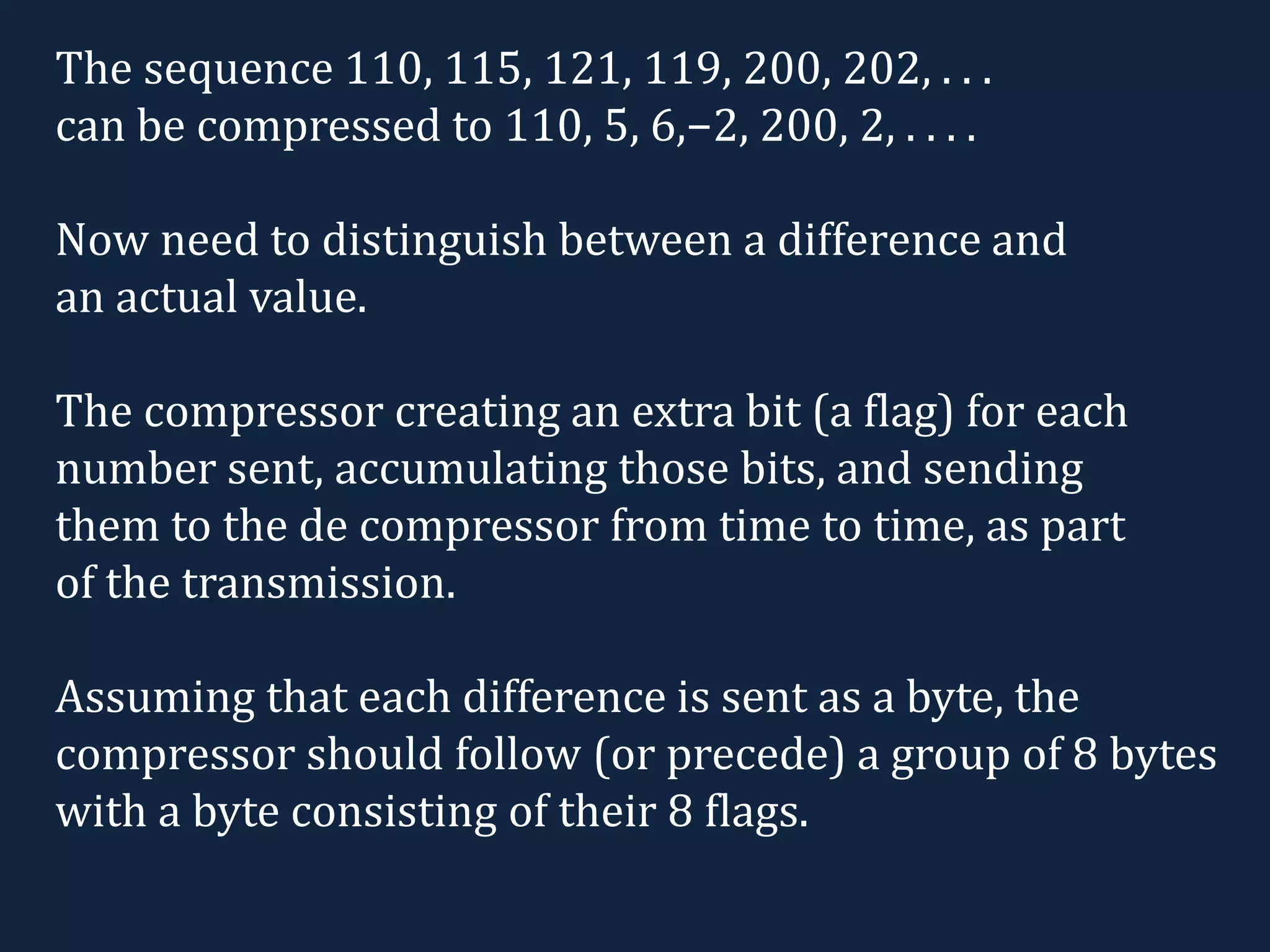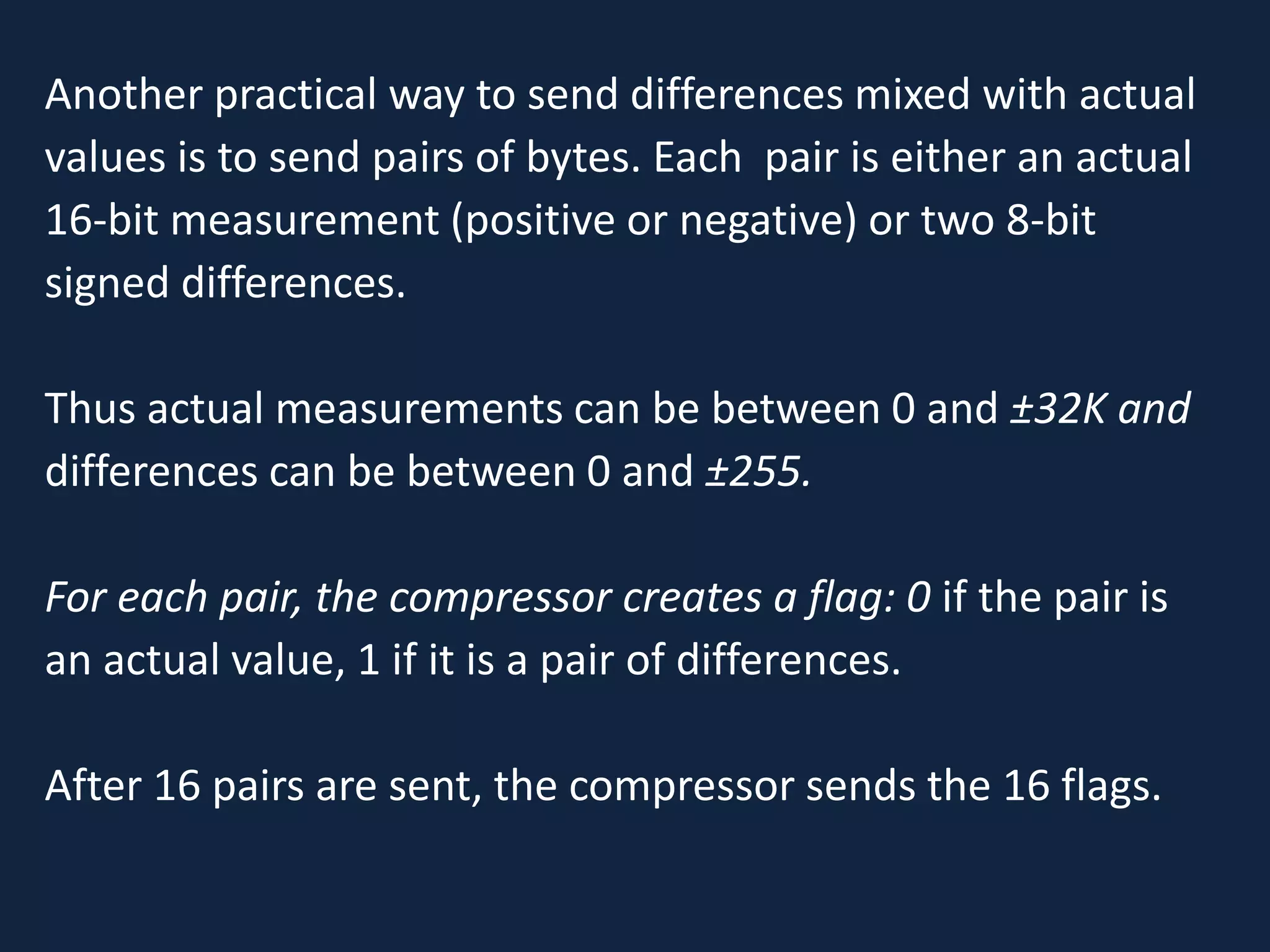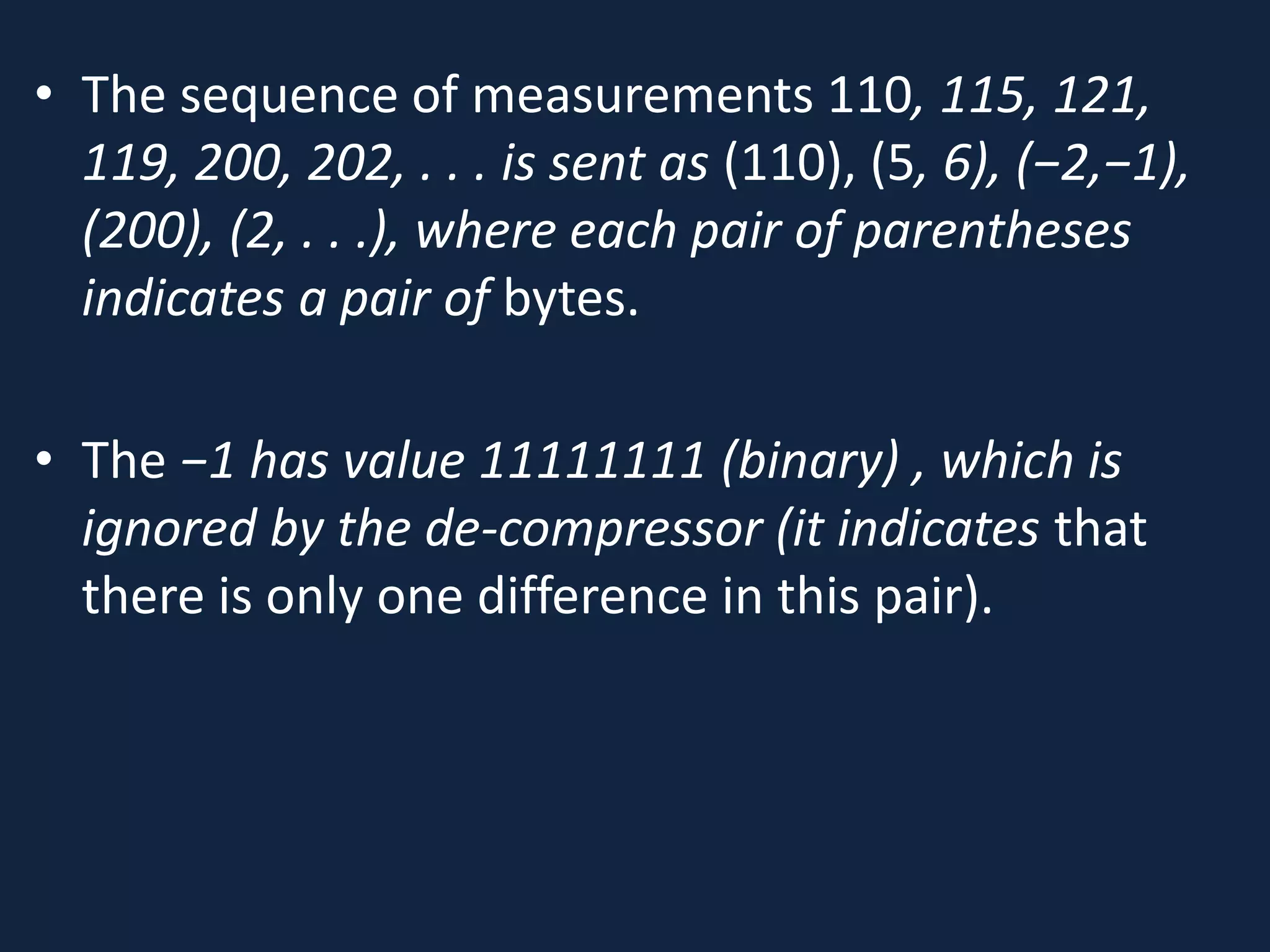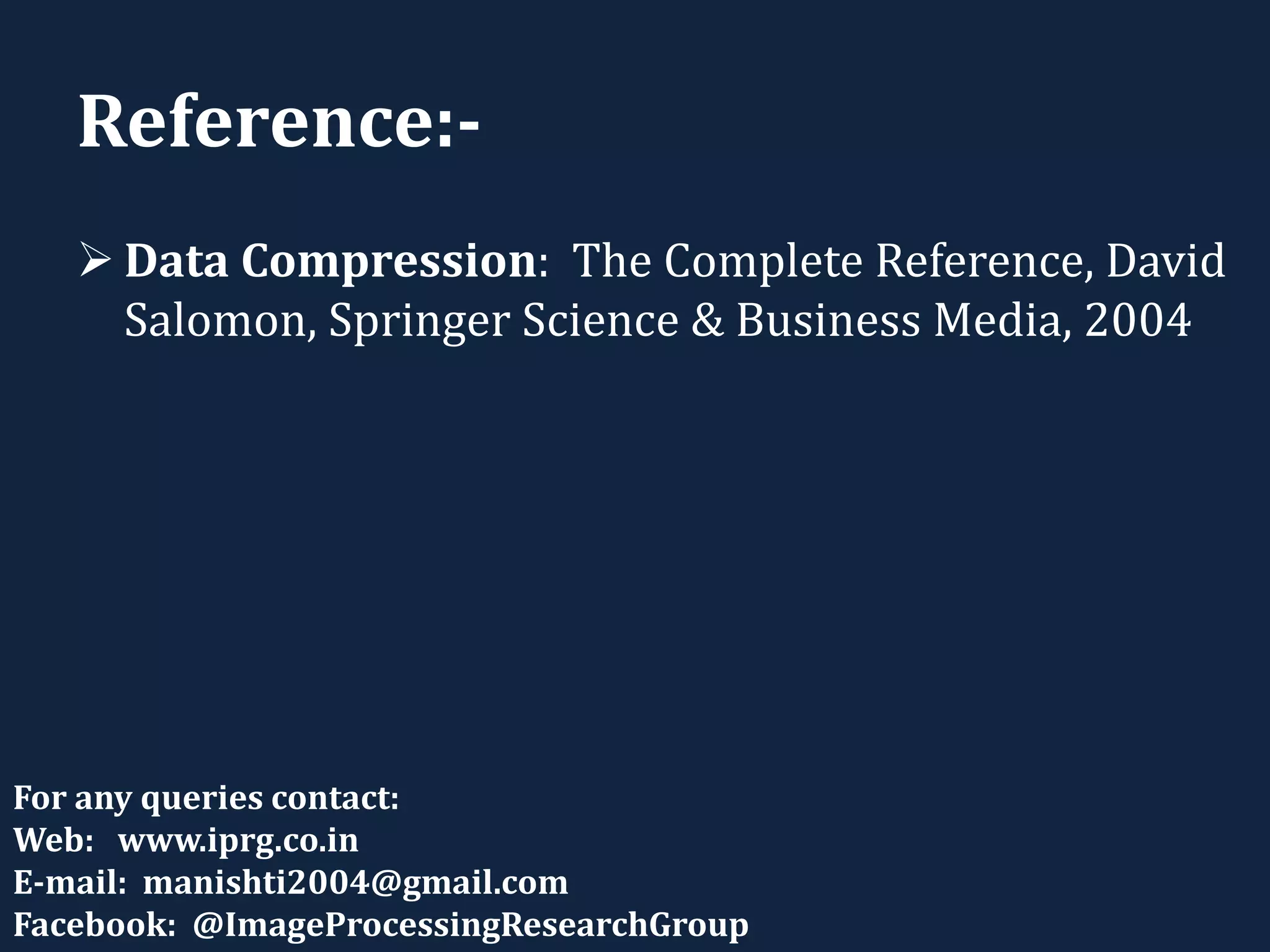Run-length encoding (RLE) replaces consecutive repeated characters in data with a single character and count. For example, "aaabbc" would compress to "3a2bc". RLE works best on data with many repetitive characters like spaces. It has limitations for natural language text which contains few repetitions longer than doubles. Variants include digram encoding which compresses common letter pairs, and differencing which encodes differences between successive values like temperatures instead of absolute values.

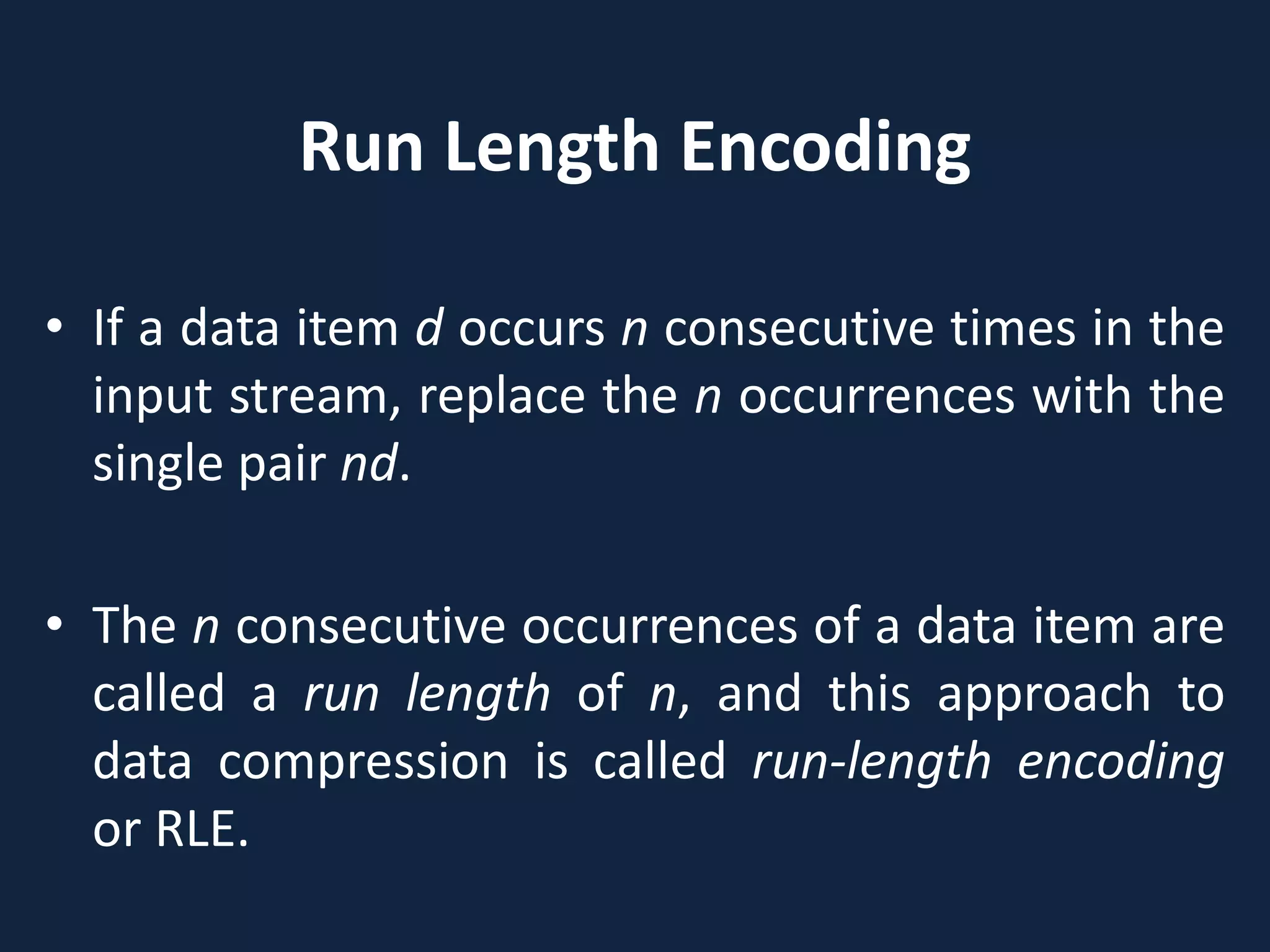
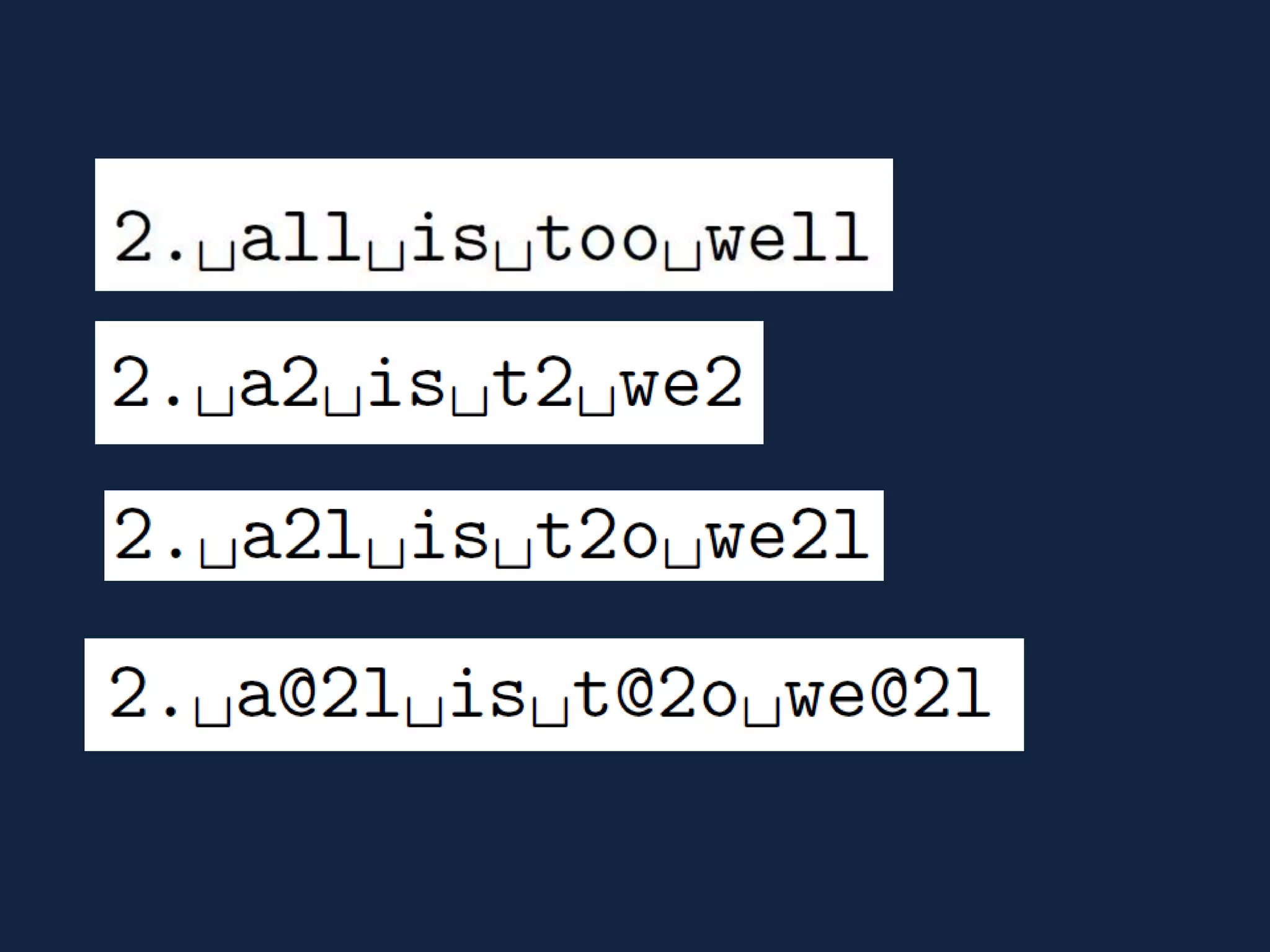
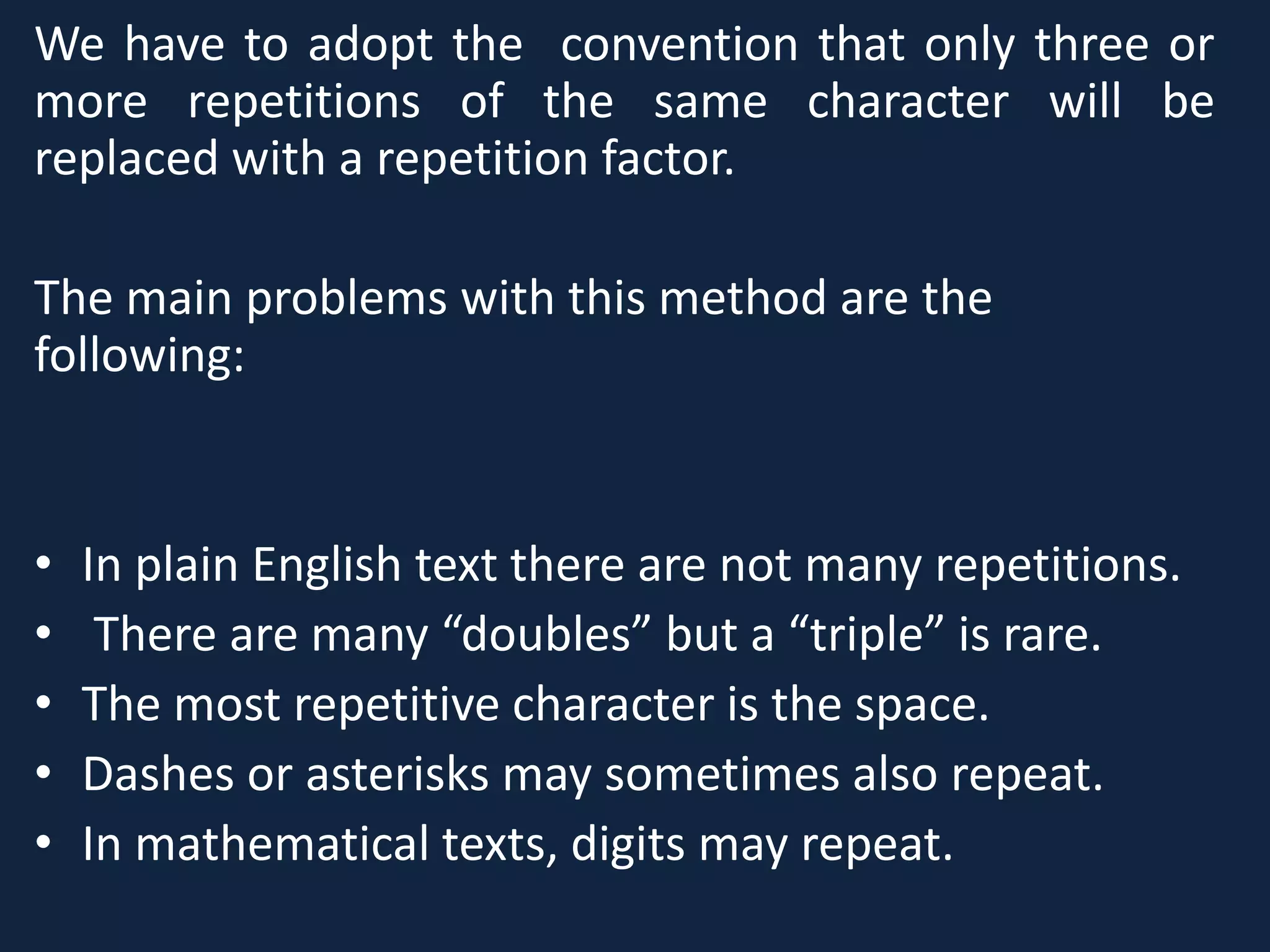
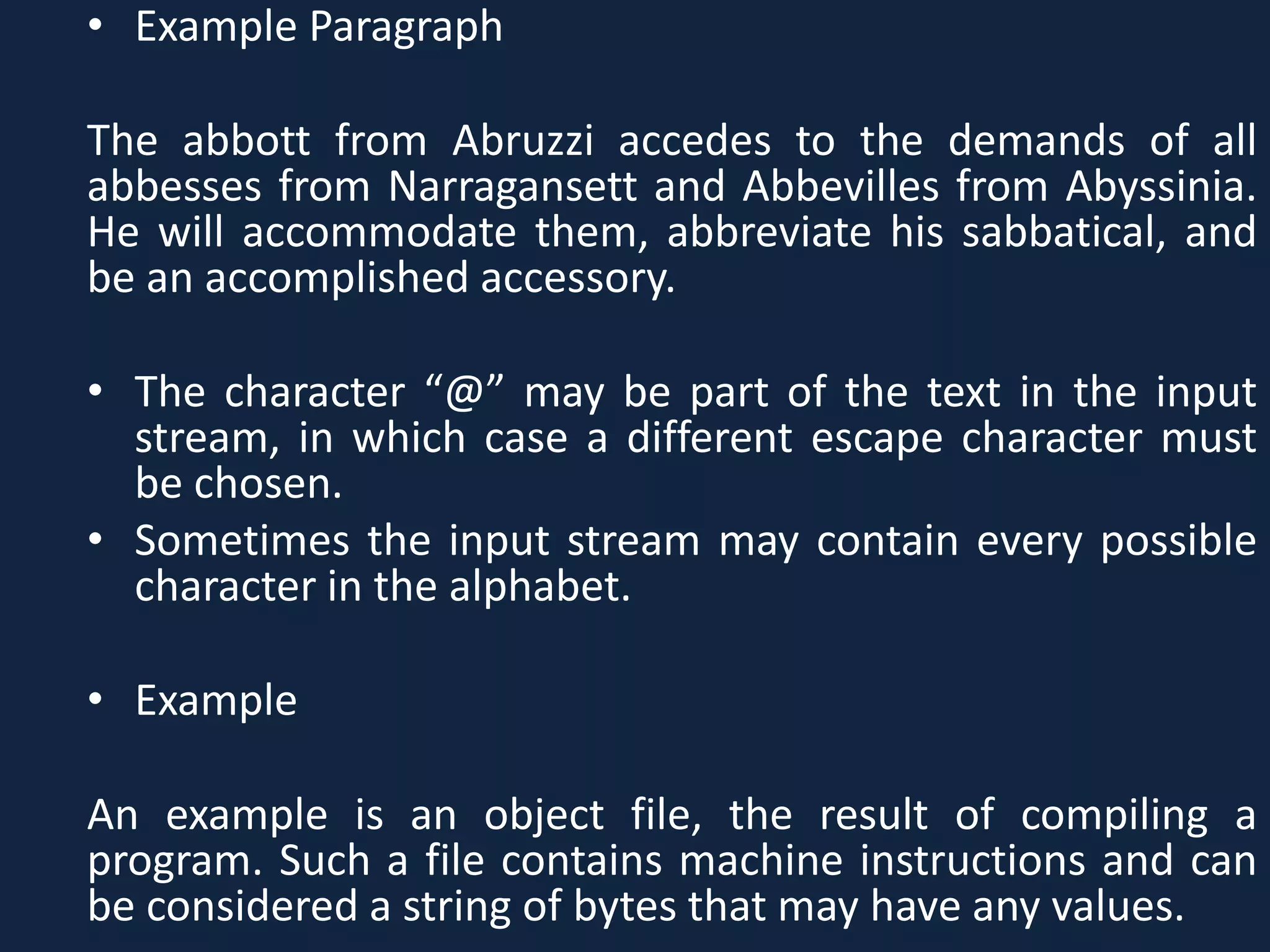
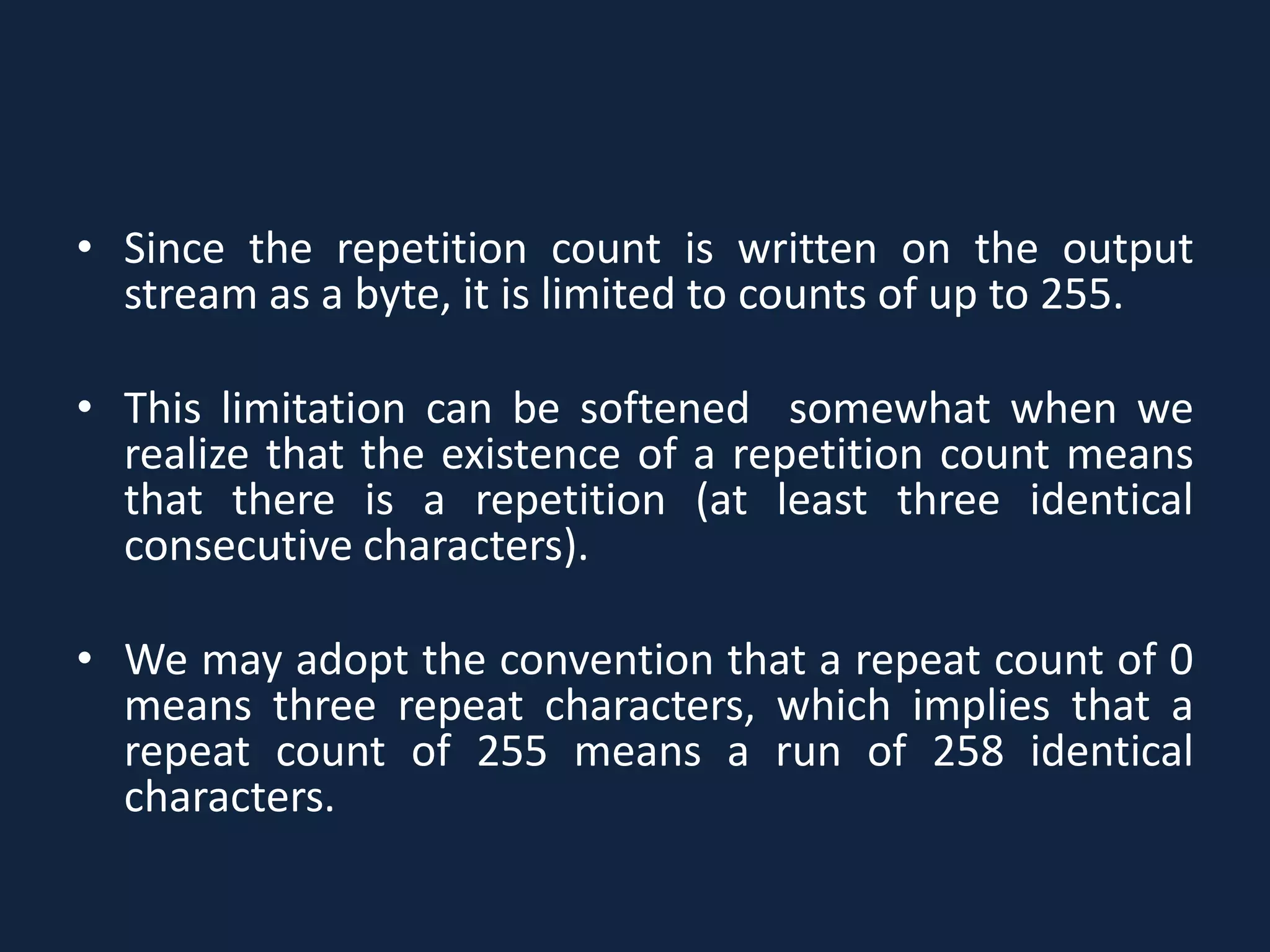
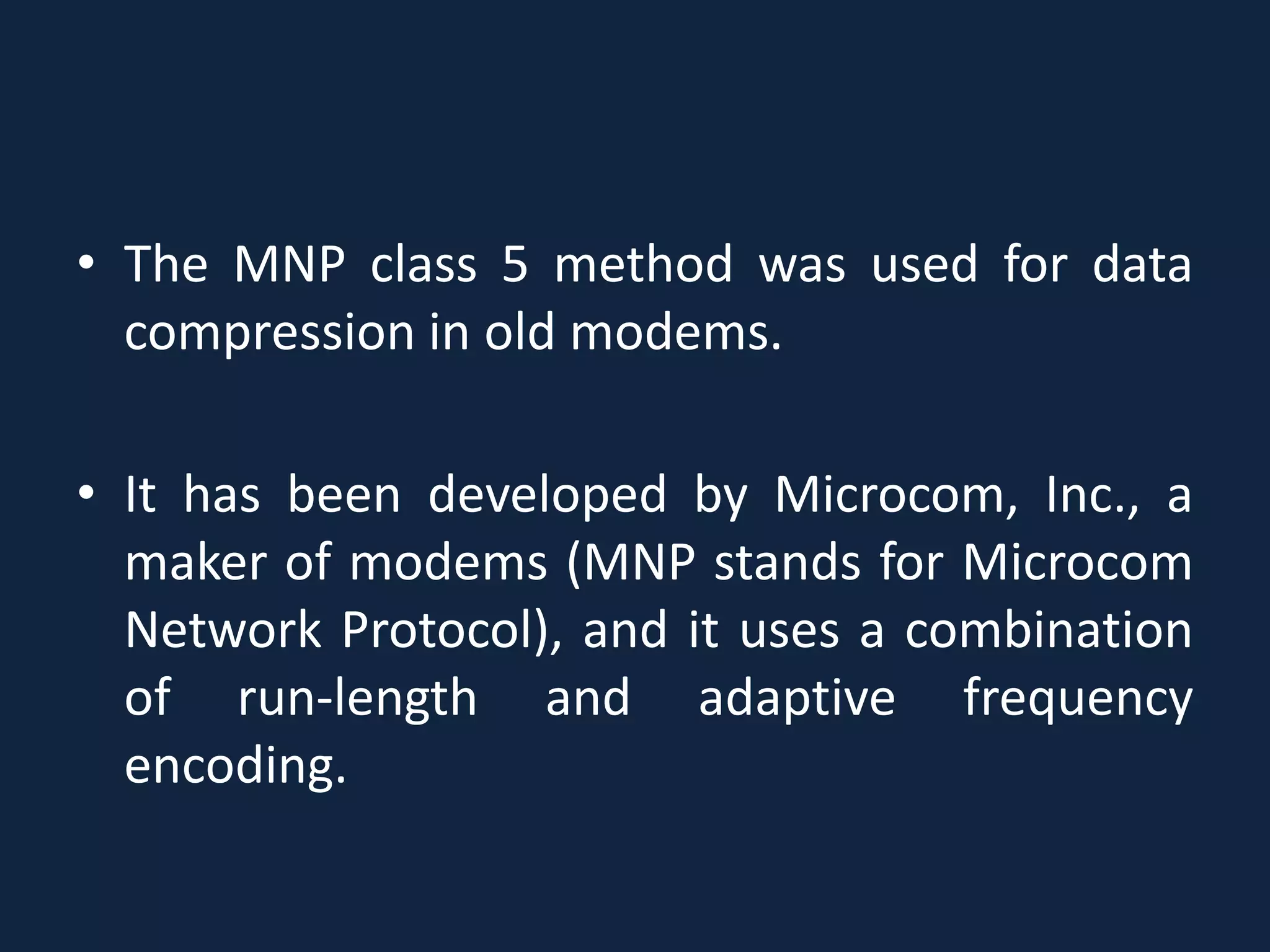
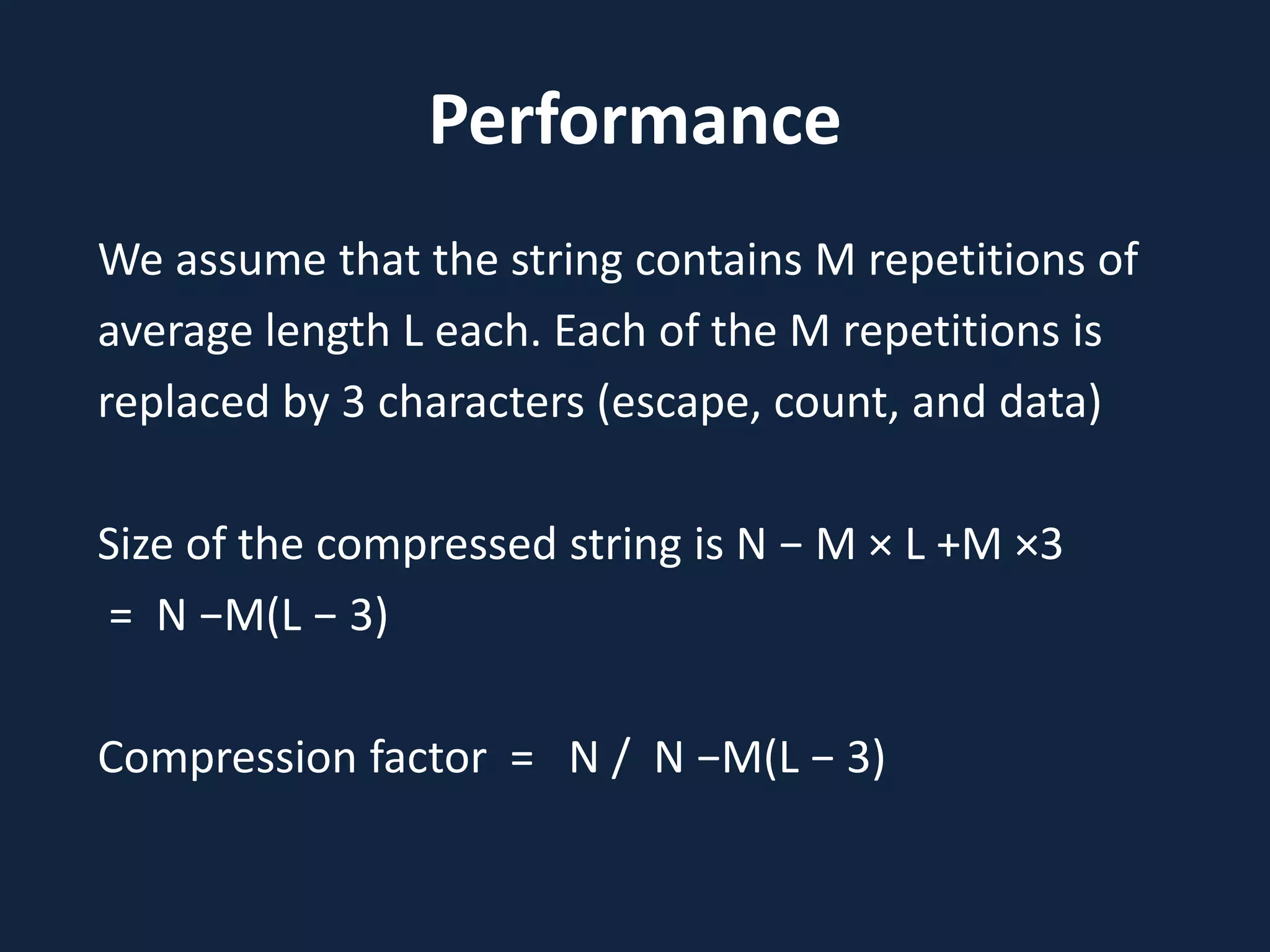
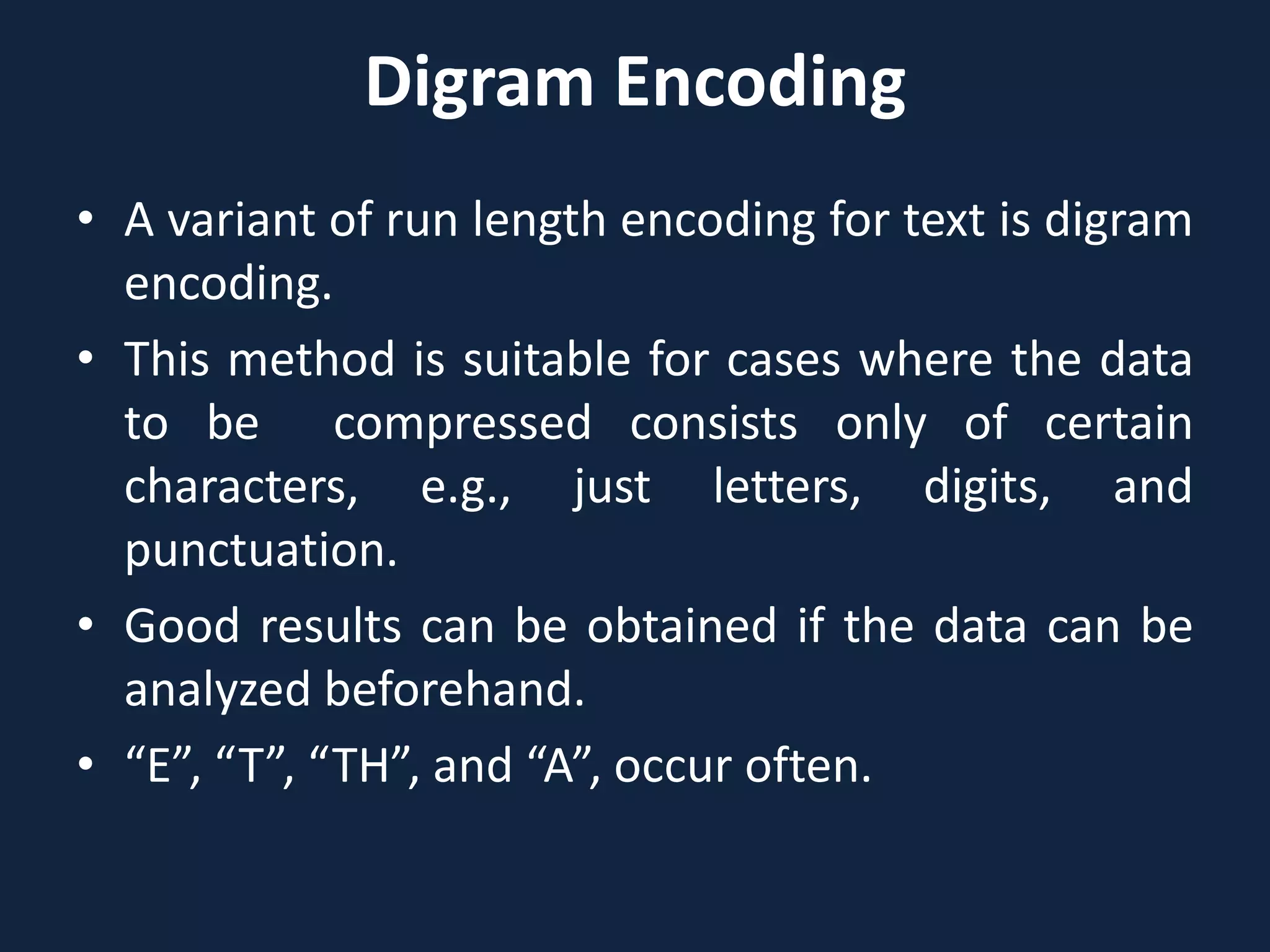
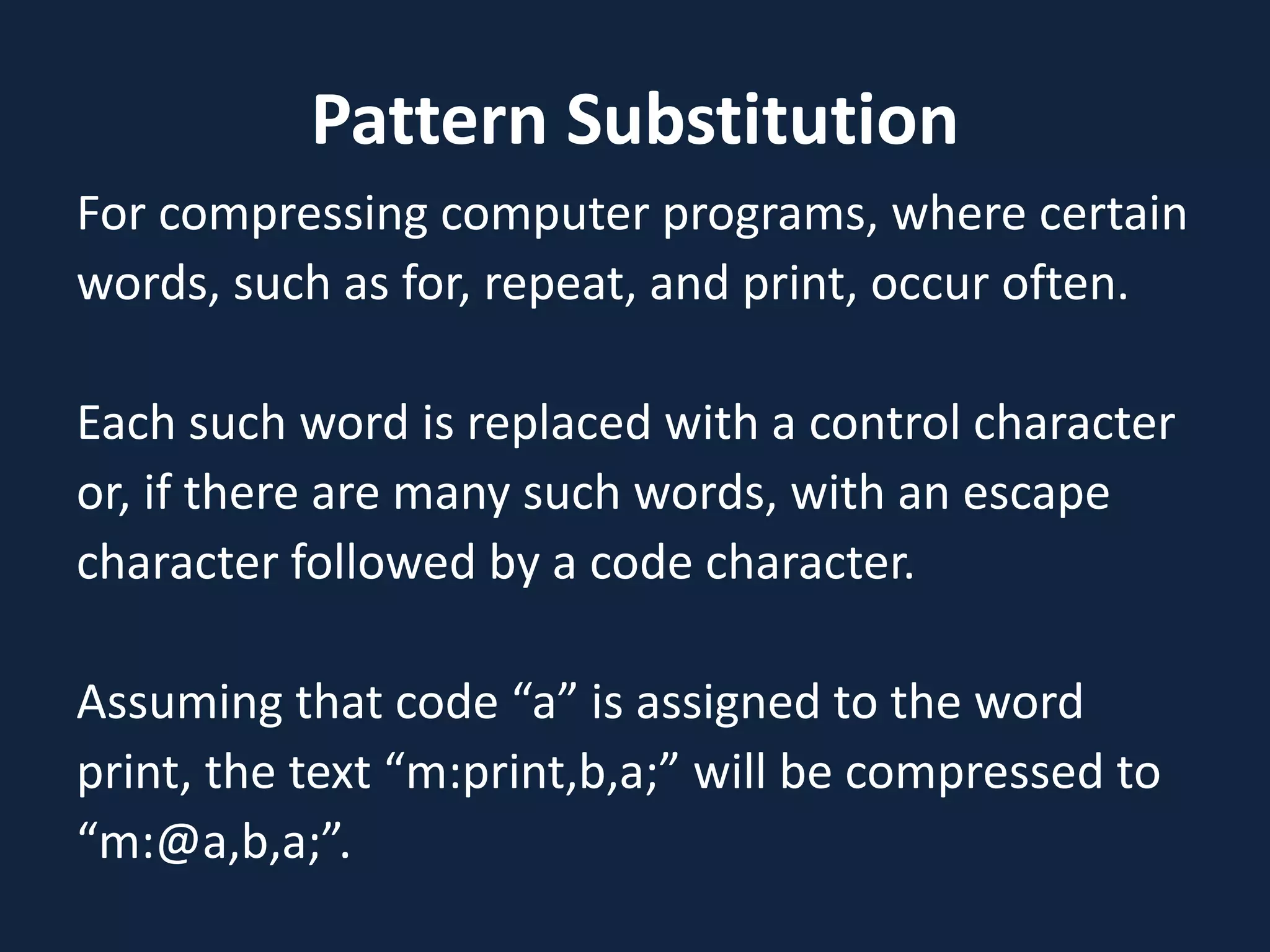
![Relative Encoding [Differencing]
• Successive temperatures normally do not differ
by much, so the sensor needs to send only the
first temperature, followed by differences.
The sequence of temperatures 70, 71, 72.5, 73.1, . .
can be compressed to 70, 1, 1.5, 0.6, . . ..
The differences are small and can be expressed in
fewer bits.](https://image.slidesharecdn.com/4-150419150841-conversion-gate02/75/Data-Compression-Text-Compression-Run-Length-Encoding-11-2048.jpg)
